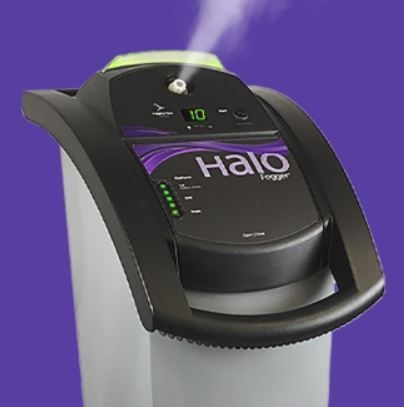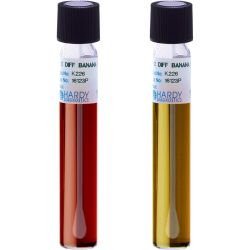Hydrogen Peroxide Fogging Shown to Significantly Reduce C. difficile Infections
Hydrogen peroxide vapors utilized in patient hospital rooms may be a significant way to control this deadly disease.
The 2019 edition of the Center for Disease Control and Prevention’s Antibiotic Resistance Threats Report estimated that Clostridioides difficile is responsible for almost half a million infections per year in the United States, with approximately six percent of those cases leading to death.(1) More commonly referred to as C. diff, this bacterium is gram-positive, bacillus-shaped, and able to produce spores and toxins. It can be found in human or animal feces, contaminated water or air, and hospitals, with the most common transmission route being fecal-oral. Infection symptoms can range from mild diarrhea to colon inflammation and in extreme cases, death. Those with compromised immune systems, like the elderly or hospitalized individuals, are at the highest risk of infection. When these conditions are coupled with antibiotic administration, the risk of a C. diff infection (CDI) can greatly increase. Also alarming, is that 30% to 50% of antibiotics used to combat C. diff are unnecessary or incorrectly prescribed.(2)
High incidence reports of C. diff highlight the importance of incorporating alternative measures to prevent and treat infections. While there has been an increase of community-acquired infections, the majority of cases still occur nosocomially and hospitals are looking for new disinfection methods that are safe and easy to administer.
Hydrogen peroxide is a commonly used chemical disinfectant that attacks lipid membranes, DNA, and other cell structures via the release of hydroxyl free radicals. Some species of bacteria may evade the consequences of hydrogen peroxide by secreting the enzyme catalase, but a specific disinfecting concentration of the chemical will override all bacterial defense mechanisms.(4) In March of 2022, a new study published by Truitt et al. suggested that aerosolized hydrogen peroxide (aHP) may be the key to reducing CDIs in acute-care facilities. (3) According to Christopher L. Truitt, Ph.D., “[Their] study showed that persistence in utilizing an aerosolized hydrogen peroxide system had a significant impact on reducing C. difficile infections hospital-wide.”(5)
The 10-year study began in Philadelphia, Pennsylvania, where researchers monitored the CDI rates in a large, acute-care hospital. To evaluate the effectiveness of aHP on C. diff presence, a hydrogen peroxide aerosolization system was then implemented into the facility. This system generates an aerosolized dry-mist fog comprised of a specific concentration of hydrogen peroxide and 0.01% ionic silver, covering all surfaces of the room. (5,6) Over the first five years of the study, Dr. Truitt and his colleagues compared C. diff incidence data from before and after aHP system implementation. The team continued to monitor the CDI rates with consistent aHP usage for the following five years. (3) Standard CDI patient room-cleaning procedures were followed per the regular protocol in place.

Up to a 74% reduction in C. diff was found after
utilizing aerosolized hydrogen peroxide.
Over the first 33 months, the retrospective study showed a 41% decrease in the facility’s CDI rate, dropping from 4.6 per 10,000 patient days to 2.7 per 10,000 patient days following the implementation of the aHP system. During the second study period of consistent aHP use, CDI rates further decreased from 5.4 per 10,000 patient days to 1.4 per 10,000 patient days, an overall 74% reduction.(3,6)
Other infection control factors may have been contributory, but the data suggests aHP has a positive impact on decreasing CDI rates as a supplemental procedure and would be instrumental in controlling this troublesome hospital acquired disease. Truitt’s current goal is to further compare its effectiveness to that of ultraviolet light. (6)
by Nikki Chin








